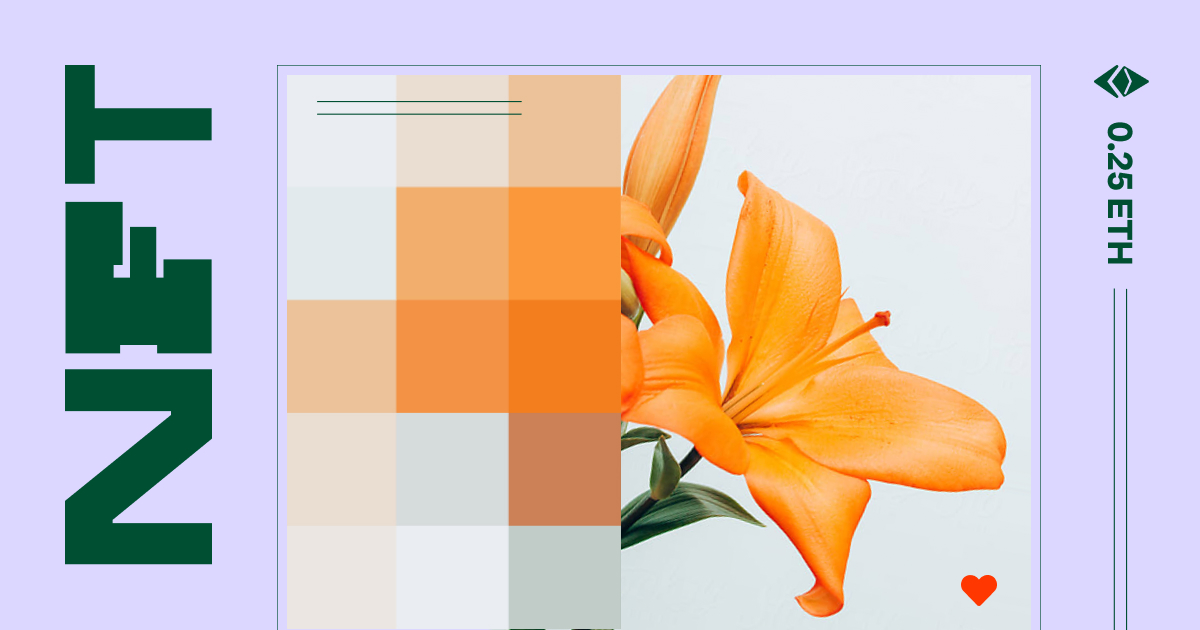We’ve all seen the major buzz around NFTs over the past year. From blue-chip companies like McDonald’s and NIKE to celebrities like Snoop Dogg and Paris Hilton, the NFT space has become more and more mainstream — and thus more and more unavoidable.
NFTs may seem confusing or intimidating, with thoughts popping up like “what exactly are they,” “why are they selling for so much,” and “why is everyone obsessed with these things?” I hear you and I was right there with you not too long ago, but don’t worry – in this article, I’ll try to break them down in the simplest way to show you how they work and how we can use them as web designers and web creators.
This new way of selling digital assets, whether it’s art, images, or videos, gives unprecedented power to content creators and offers new opportunities to monetize our art, distribute our work to a larger audience, and quite simply — join the future of the web.
NFTs aren’t going anywhere, so you too should stay put and let’s uncover the details of how they work and how to use them practically.
What Are NFTs?
Let’s start with the basics. The term NFT stands for “Non-Fungible Token.”
Put simply, it is a unique digital record, stored on the blockchain (predominantly Ethereum), that provides proof of ownership of a specific digital asset. This could include ownership of anything like a jpg, a video, an audio file, or really any other type of digital file.
Some popular examples include the NBA, which sells NFTs of video clips of basketball games. Or digital artist Beeple who famously sold his art for $69 million in an auction.
I know what you’re thinking — but where does the value come from?
Well, the main thing about NFTs is that they are not able to be replicated. This means there is a finite amount of each token/asset that can exist. If you own the NFT, you own the official version of whatever it is you own.
That means we (the market) can now place a value on that item. Before NFTs, there was no way to concretely prove that you are the owner of a digital asset, so the asset essentially had no way to be valued. Take Beeple for example. Before he got into NFTs, the most he ever sold his art for was $100 for a print. Now he could sell the actual original digital work for whatever the market will pay — which turned out to be an insane $69 million!
Sure, anyone could download the image Beeple sold, and while owning the NFT doesn’t provide copyright rights to the work, the owner now has definitive proof that they own the original. With that in mind, there are multiple reasons people are buying NFTs:
- As an investment. The scarcity aspect of NFTs has led them to become collectibles, and historically their value increases after the initial sale. Similarly to buying a piece of art as an investment, people hope and expect the value of their NFT to increase.
- For a certain utility or access. For example, some NFTs are sold as part of a collection with exclusive access to a community. By buying an NFT from the collection, you get access to the community. NFTs could also provide access to real-world events and items. One example I have to share because they’re one of my favorite bands is Kings of Leon, who released their album last year as an NFT. Anyone who purchased it gained access to special perks, such as limited-edition vinyl or future concert tickets.
- People genuinely value the art. Some people simply value quality artwork that stands out to them. If you buy NFT art, you now own a piece of art and can even display it in real life via digital screens.
NFT in Web Design
So, we’ve established that NFTs are a new way to buy and sell digital assets. This is completely changing the game for digital artists because this is something that has never been done before. NFTs mark the first time digital creations, such as websites, logos, graphic art, illustrations, 3D models, and animations can actually be sold online.
It also happens to be extremely trendy and has created a huge buzz around digital art in general. The NFT market, which mostly consists of the sale of some type of digital art, reached a whopping $22 billion in 2021, up from just $100M in 2020! This means digital creators and web designers are in the perfect position to take advantage of this new technology to earn money and distribute work to new audiences around the world.
Essentially any digital art could be sold as an NFT. Typically, this looks like selling some sort of artwork like illustrations or animations. For example:
- Bored Apes Yacht Club and CryptoPunks, which are among the most popular collections
- The Fuzzies Collection by an illustrator named Hank Washington
- The Degen Toonz Collection, which was created by digital designers
- And countless more examples of artists turned NFT-seller
On top of the standard selling of unique digital art, there are also web designers like Marko from Hipinspire who sells NFTs of full websites he previously designed for clients. You can even buy colors as NFTs. The options are truly endless.
How To Use NFTs as a Web Creator
So, we know what NFTs are and how they are impacting the world of web design, but how exactly can web creators make use of them?
Web creators have multiple ways to get in on the action of NFTs. Most notably, you could monetize this new technology by selling NFTs or making them for others, but you could also simply use it to grow your audience and reach more fans. Below are some of the main ways to use NFTs as a web creator.
Sell Your Work as an NFT
The first and most obvious option is to sell your own digital creations as NFTs. As web creators, we produce digital assets like websites, logos, graphic art, illustrations, animations, and more every day. Now, with NFTs, we have the option to sell these goods to anyone who wants to buy them and become the owner of the original digital file. This is a brand-new revenue stream and there is even an option to earn royalties on future sales.
The standard way it works is when you put an NFT up for sale, you could either set a fixed price or put it up for an auction, letting your fans fight it out and decide how much they want to pay for it. This changes the game and could result in big pay-days as we saw with Beeple.
Furthermore, on top of the money you earn from the initial offering, there is an option for you to earn royalties every time that NFT (your work) is traded/sold in the future. For example, you could sell an NFT for $1,000. Then, let’s say the new owner sells that same NFT for $10,000 in the future, you could earn up to 10%, which would be another $1,000. Note that you determine the royalty percentage before the initial sale.
Offer NFT Creation and Promotion Services to Your Clients
The other option you have to monetize this technology is to offer NFT creation services to clients. There are many reasons for businesses and brands to use NFTs. Joining in on this trendy new technology can help them increase brand awareness, boost engagement with their customers, and add new revenue streams.
Now let’s say you’re a web designer who creates websites for clients, you could offer an entirely new service line to create NFTs and build a portfolio site to promote them. You just need to know to offer it! Not only will this help your clients, but it will help you position yourself as being up-to-date with the latest technology and trends on the Internet.
Additionally, you could sign up for platforms like Fiverr and make listings offering NFT design or NFT website creation services.
Grow Your Audience and Following
If money isn’t your main concern or you’re skeptical of how much you’ll actually make — at the very least, sharing your work as an NFT is a great way to get your work out to the world in the newest, trendiest way.
There are thousands of people around the globe who are interested in buying NFTs for some of the reasons listed above, such as for the investment opportunity or for a certain access/utility. While this audience persona may not necessarily be interested in art/design per se, they may be exposed to your work simply because they are now NFTs. The simple act of offering your work as an NFT can help you reach new audiences around the globe, helping you grow your following and expose yourself to potential clients.
How To Create an NFT
If you’re at all familiar with cryptocurrencies, the process of creating an NFT (also known as minting) will be very simple. And if not, don’t worry – it’s not complicated, you just need to know what to do, which is why we’re here. There are 5 basic steps to get your NFT up for sale:
1. Create a Crypto Wallet
First of all, it’s important to understand that NFTs operate on the blockchain, and therefore require you to have a crypto wallet to transfer and store NFTs, and buy/sell them.
If you do a simple Google search you’ll find tons of wallets to choose from, but some of the most popular wallets are MetaMask and Coinbase Wallet. Simply pick the wallet of your choice, download it, and get set up.
2. Fund Your Crypto Wallet
When you turn your digital work into an NFT, you are essentially recording a transaction on the blockchain, which requires the network to do some work, costing you money. This small fee is called a “gas fee.”
To make sure you’re able to pay for this fee and mint your NFT, you need to have enough cryptocurrency in your account to cover the cost. You’ll need to buy some Ethereum (or whichever crypto you plan on using), which you can easily do within MetaMask or Coinbase Wallet.
Note that gas fees aren’t a fixed amount and are dependent on the price the network is charging at the moment. On average, you can expect to pay around $50-150 to mint each NFT.
3. Pick an NFT Marketplace
In order to actually create an NFT and allow people to purchase it, you will need to use an NFT marketplace. There are many marketplaces to choose from, including Rarible, OpenSea, Mintable, KnownOrigin, and SuperRare. OpenSea is the most popular one, so we’ll use it for the rest of this walkthrough.
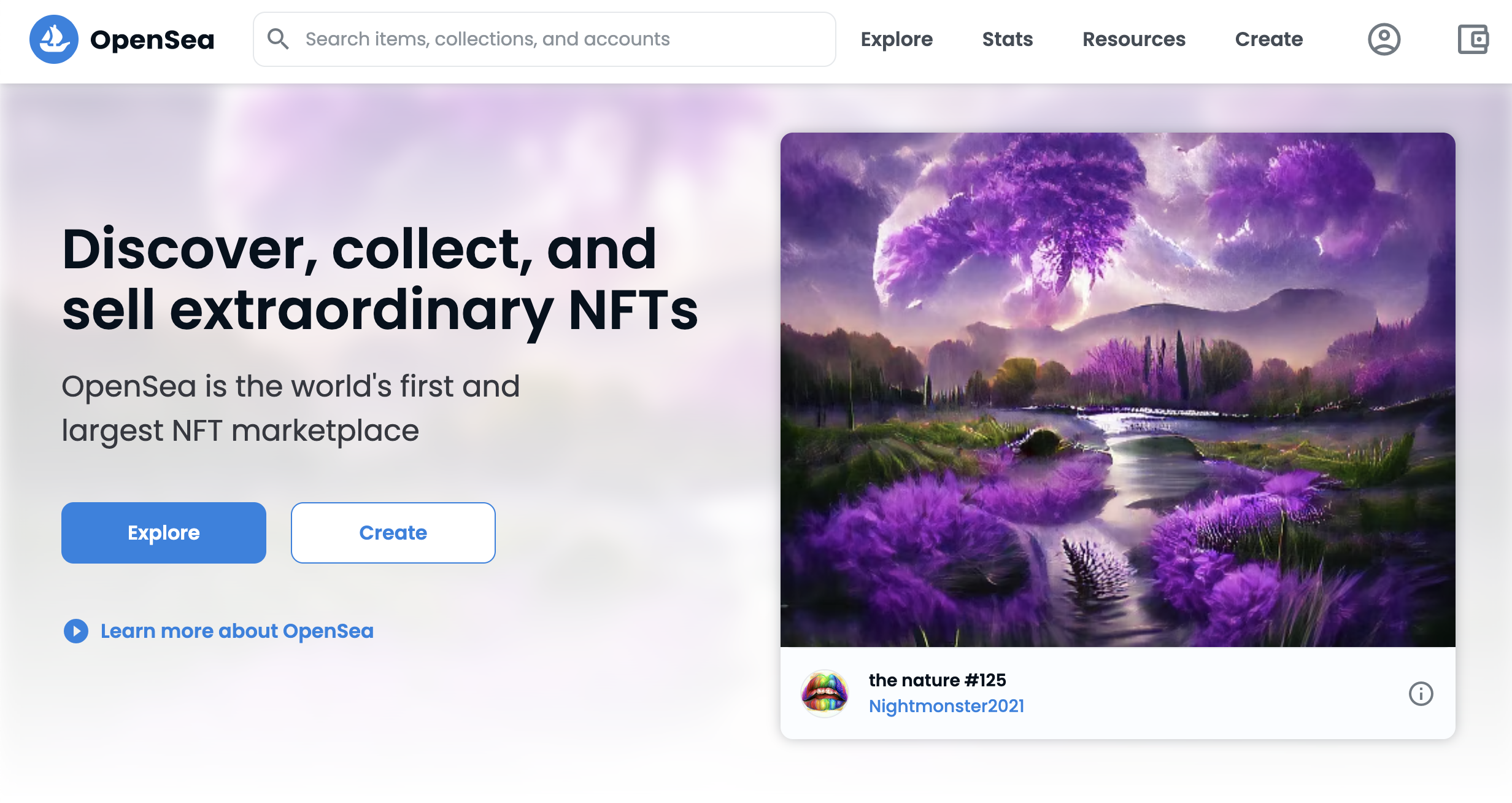
4. Connect Your Crypto Wallet to the NFT Marketplace
When you click “create” on OpenSea it will automatically ask you to connect your wallet. Simply click the wallet you created to connect it to the marketplace and follow the instructions.
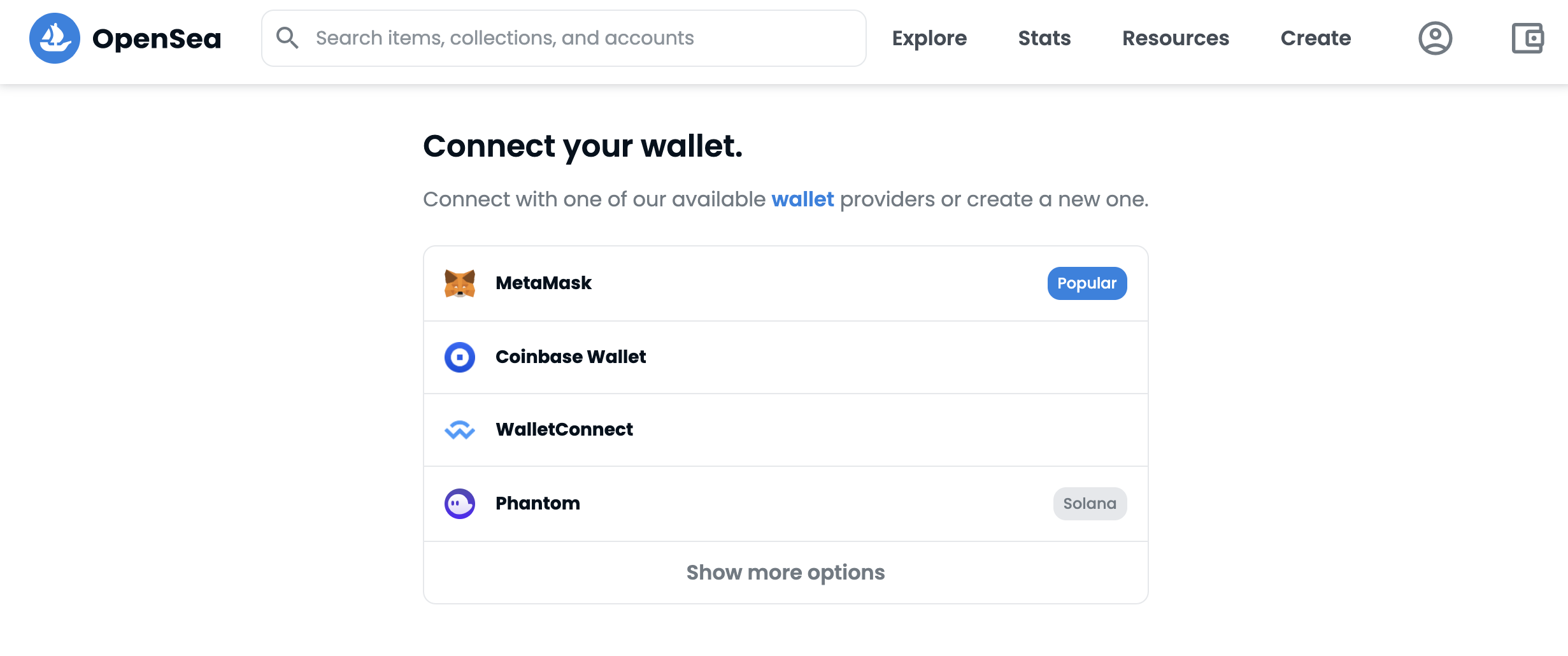
5. Mint Your NFT(s)
Once you have set up a wallet, funded it, and connected it to the marketplace of your choice, it’s pretty simple to follow the instructions on the marketplace and create the actual NFT.
Most importantly, you’ll need to upload the actual file of the work (image, video, etc.) and select the terms of the sale. For example:
- Will it be sold for a fixed price or at auction?
- How long will it be available for sale?
- Will there be royalties paid to you for every sale in the future?
NFTs’ Environmental Impact and Solutions
It’s important to note that NFTs, and cryptocurrencies in general, have come under scrutiny for their impact on the environment. As previously mentioned, when you mint an NFT, you are recording a transaction on the blockchain. On the Ethereum network, these blockchain transactions take a considerable amount of computing power to be completed, which takes a lot of energy. It’s estimated that a single transaction on the Ethereum network has the same carbon footprint as 299,362 VISA transactions or 22,512 hours of watching Youtube.
While some may say NFTs aren’t directly causing this energy consumption because the blockchain transactions would be occurring anyway for other types of transactions, there is certainly a need to be conscious of our impact when using this technology so we can make better decisions. Many digital artists themselves are taking action to try and raise awareness and reduce the impact of using NFTs.
Ethereum does say they are working on solutions to decrease the energy usage on their network dramatically, however, there is no specific timeframe for this to take place. For now, there are options to use alternative blockchains, such as Solana, Algorand, Cardano, and Tezos, which use less energy than Ethereum. NFTs can be bought and sold with these different blockchains on multiple marketplaces, like Solsea, Solanart, and Rarible.
How To Promote Your NFTs
Congrats! You’ve got an understanding of what an NFT is, why it can be beneficial for you, and how to actually make one. Now it’s time to set up a landing page to promote your NFTs and help get the most exposure.
Almost any NFT or collection of NFTs you’ll find has a website or landing page to properly communicate the project details to potential purchasers. This acts as a place where you can view the portfolio of available NFT designs, learn the backstory of the work or creators, and in general find out more about the project and future plans.
These websites tend to be super creative and use trendy design styles. Here are some cool examples for you to check out and be inspired by: Robotos, Dippies, and Coolman’s Universe.
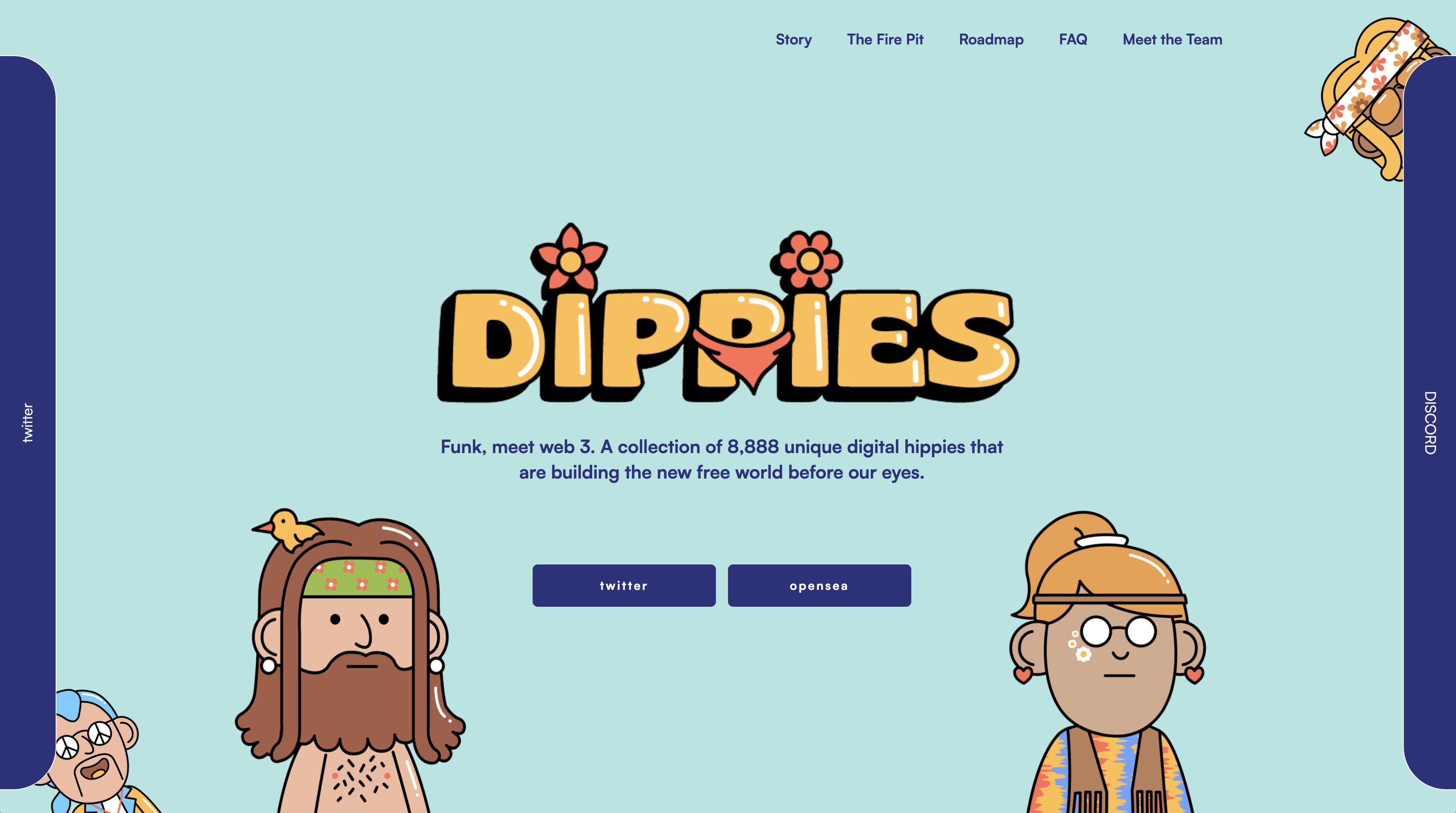
Get Started With Elementor’s New Landing Page Designs
I’m sure you’re extremely excited and anxious to launch your first NFT as quickly as possible at this point. So I have some good news! Elementor just launched 4 new NFT Landing Page designs to help you quickly launch your NFT webpage.
Tip: you can start using these designs right away from within the Landing Page Builder in Elementor. For a full walkthrough on using the builder and Landing Page Library, check out this YouTube video.
Each landing page is its own unique creation, fully equipped with the necessary sections you’ll need, engaging effects & animations, and even imaginative copy to give you some inspiration. These pages offer the perfect starting point to create a website displaying your NFT creations, your story, and your roadmap.
Take a look and pick the one that feels right for you!
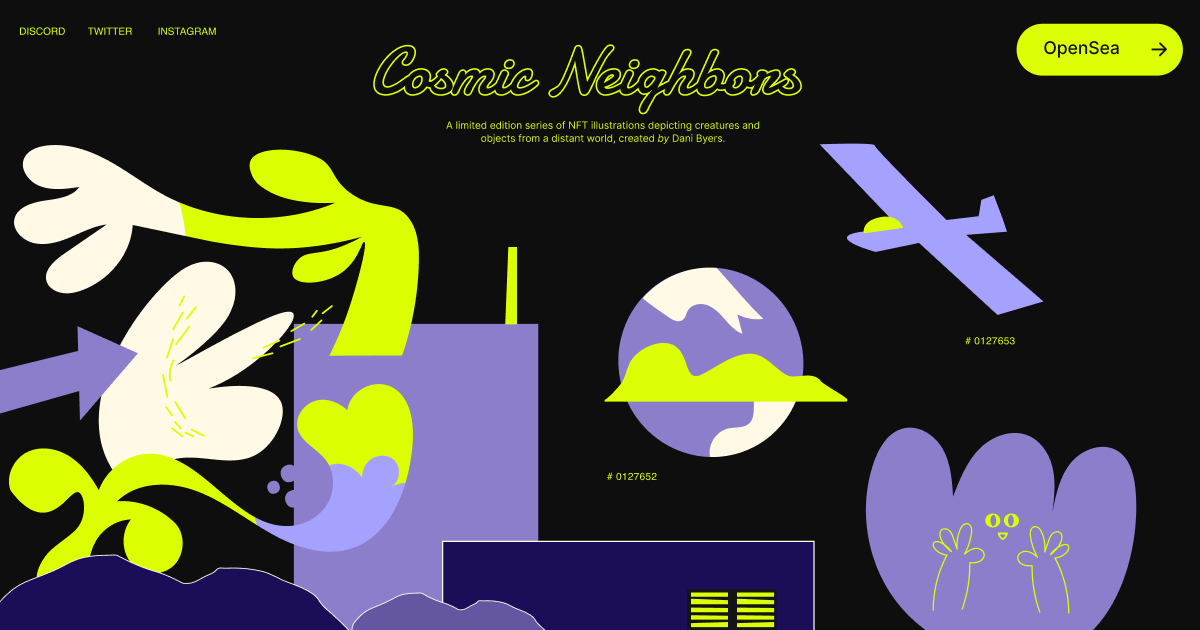

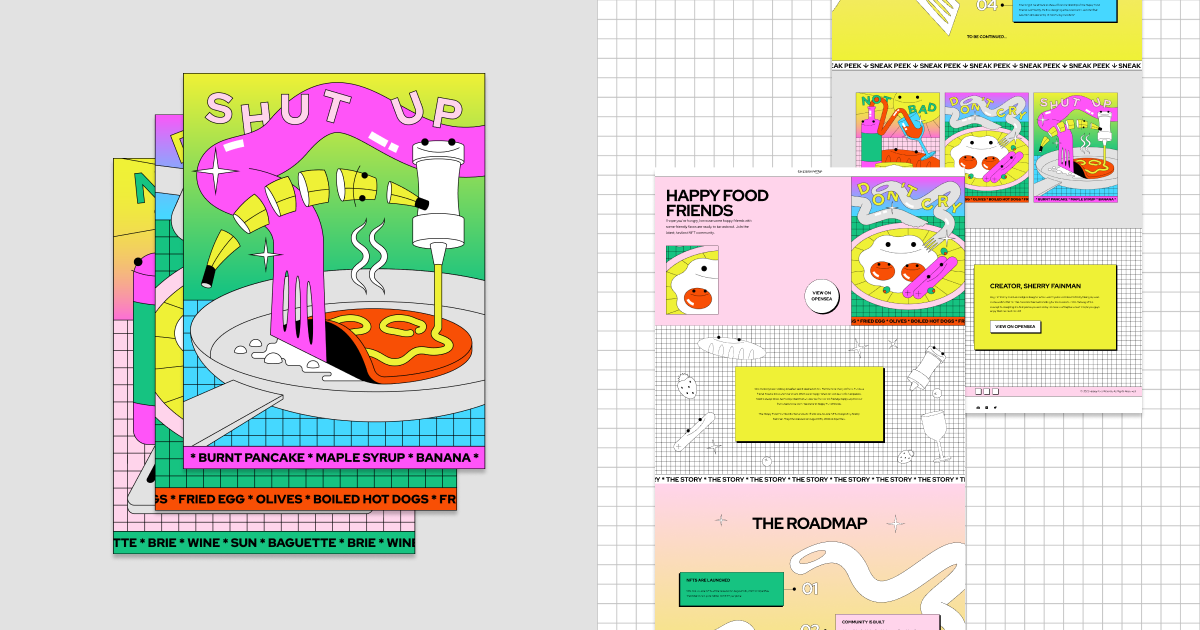
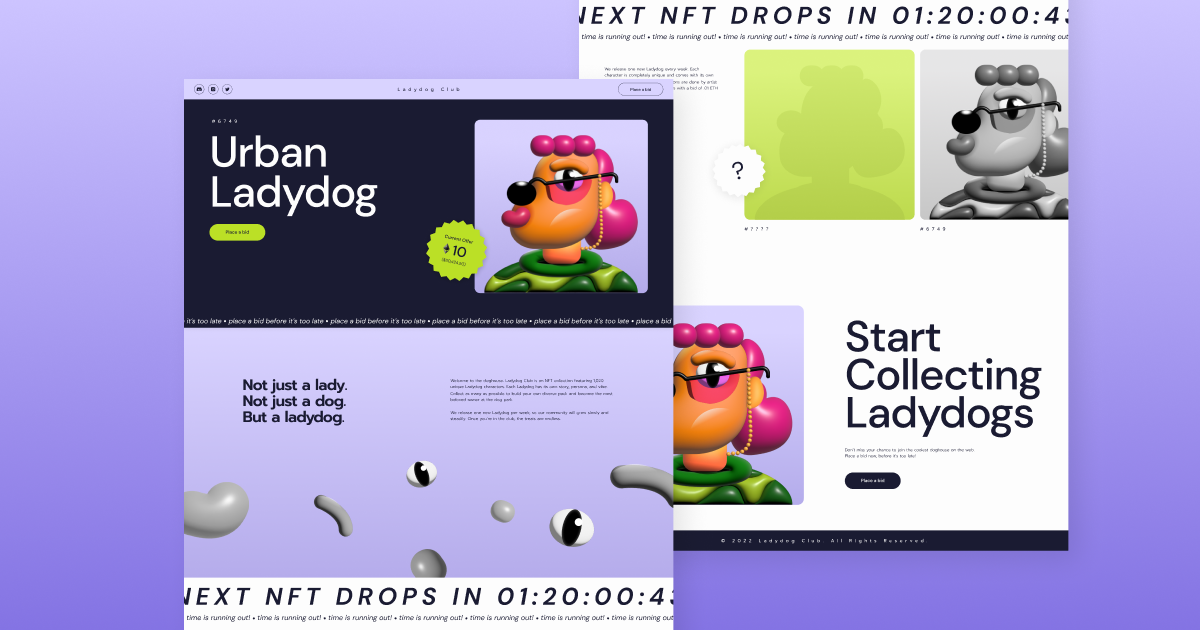
Add a New Revenue Stream, Reach New Audiences
NFTs are a new way to buy and sell digital assets online, offering many opportunities for us web creators. From adding new revenue streams by selling your own work or creating NFTs for clients, to reaching new audiences around the world, this technology should not be overlooked. As long as you understand how they work and how to create them, the options are truly endless. Who knows, maybe you’ll end up becoming the next NFT millionaire.
Looking for fresh content?
By entering your email, you agree to receive Elementor emails, including marketing emails,
and agree to our Terms & Conditions and Privacy Policy.
